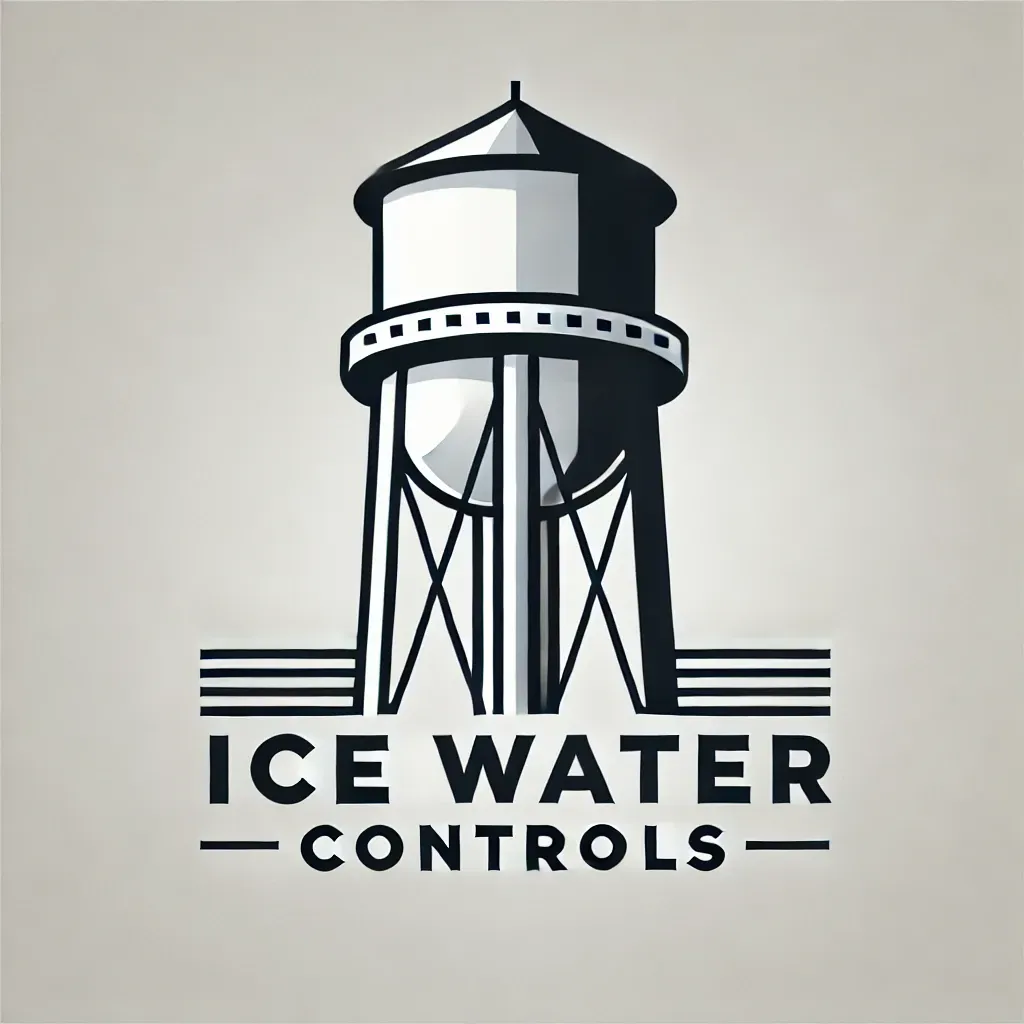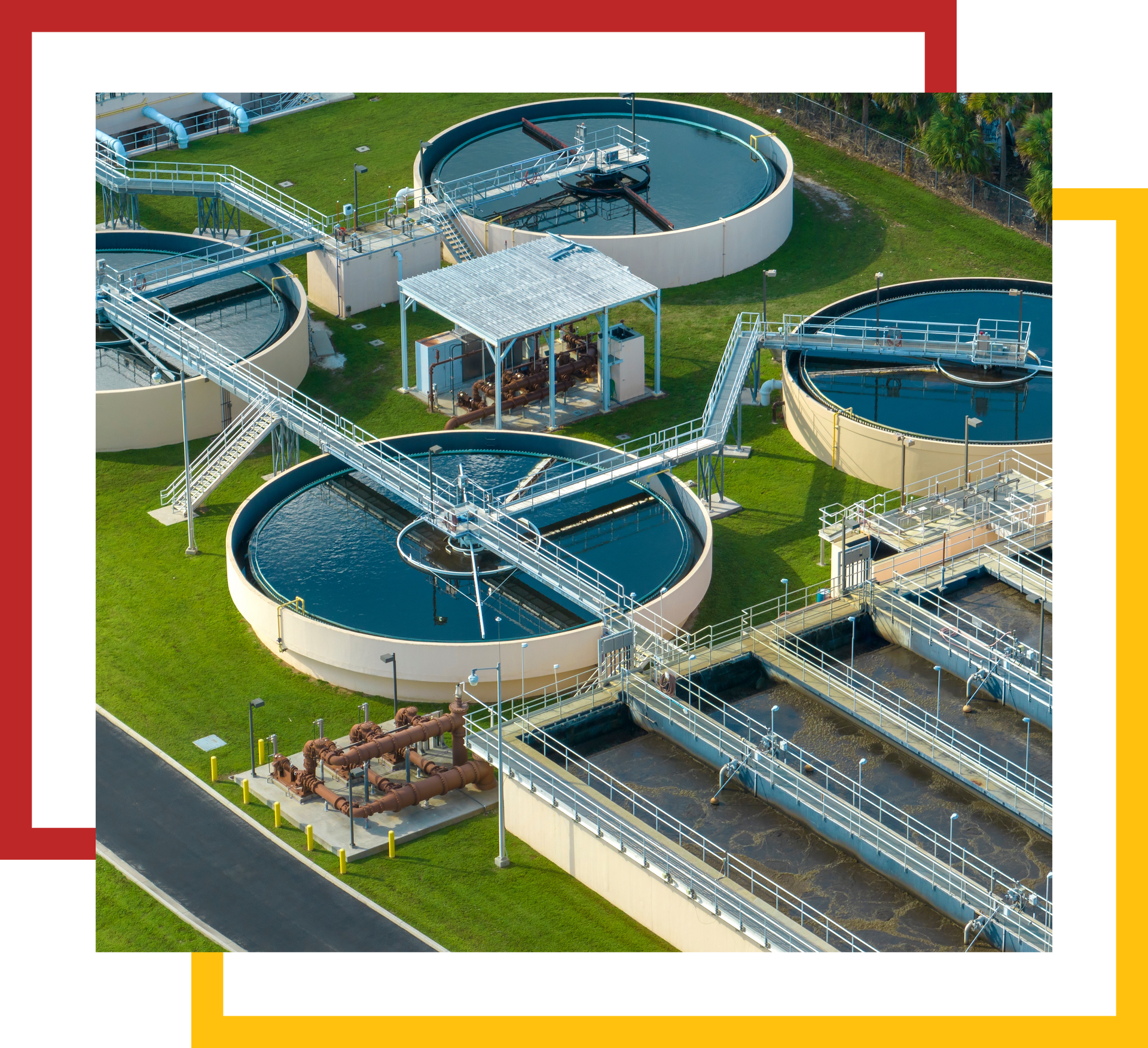Innovative Control Solutions
Kevin Simcoe and the Caterpillar Wheel Flusher

I am dedicating this article to Kevin Simcoe. He was a hydraulic hero and mechanical mastermind that I had the privilege to work with on many projects for Caterpillar's Decatur plant. He was a world class problem solver and a positive individual that inspired creative ingenuity to those that work around him. Kevin was not only the mechanical engineer on his projects, but he could also fabricate, weld, and assemble anything that he could envision. And, some of his inventions and innovations saved the giant corporation of Caterpillar millions of dollars by improving the productivity and efficiency of the manufacturing of their mining truck wheels. One of which happened to be the rear wheel of the Caterpillar 797, which was that largest truck in the world at that time.
The first project that I was lucky enough to work with Kevin on was the MD4855 Rear Wheel Flusher for the 100 ton and up product line. These were the truck models 777, 785, 789, and 793 which was the 240 ton truck. The MD4855 wheel flusher was an oily greasy monster of a machine that required skill and experience to operate. It had several deficiencies that needed to be improved. But, it performed a critical step in the production of mining trucks in that it was the last stop of the rear wheel before it was bolted to the truck. And, it's purpose was to lubricate, clean, and test the wheel assembly's massive spindle bearings and braking system, and to flush out as much dirt and contaminates as possible.
My job as a controls engineer was to create the software to make Kevin's inventions come to life and function reliably and create the operator interfaces on the HMI so that employees could figure out how to run the machine.
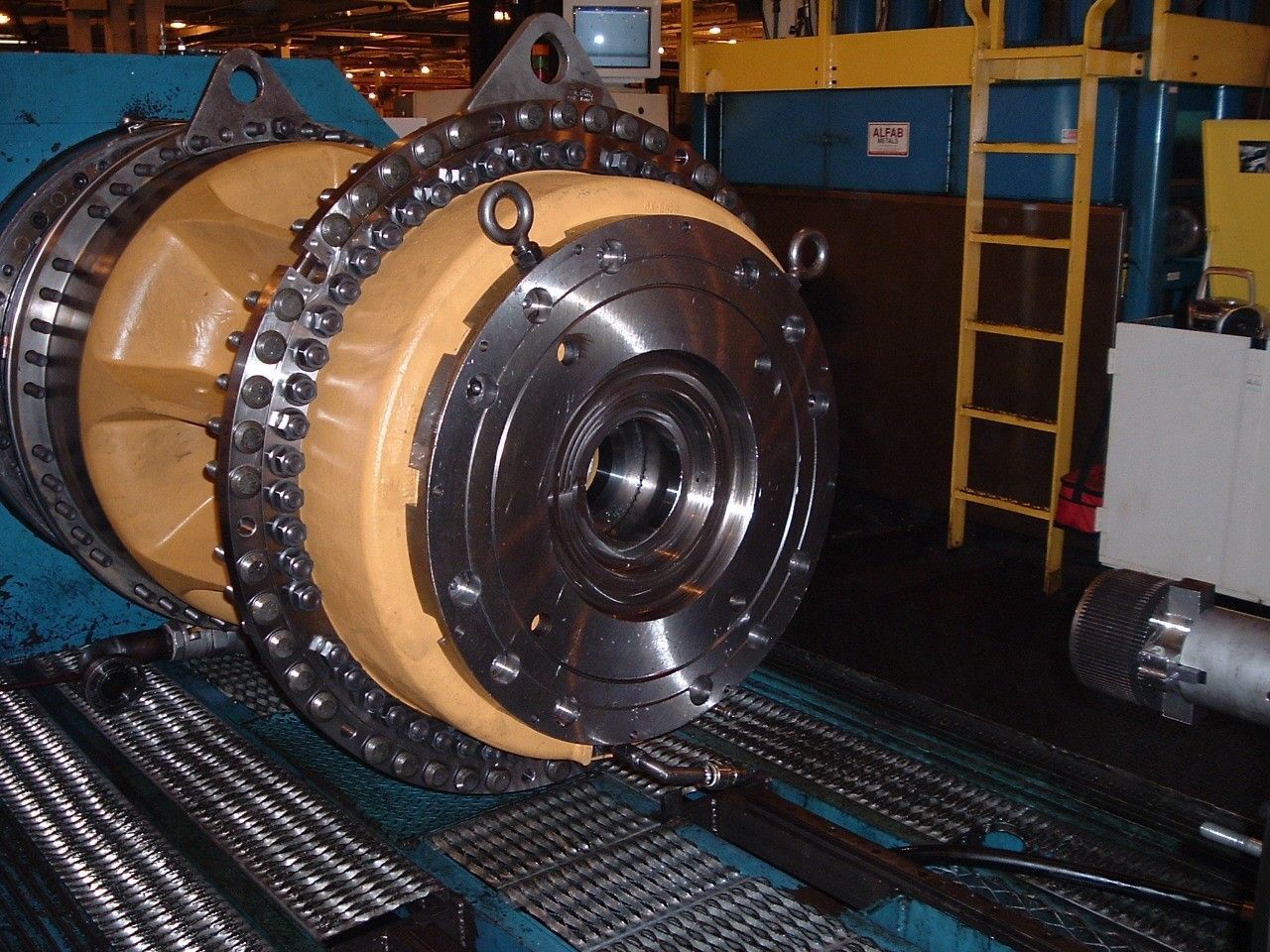
This is the MD4855 Rear Wheel Flusher in Caterpillar's Decatur, Illinois plant. The spindle gears were driven by a 100hp motor and variable frequency drive.
Here is a list of improvements made to the machine over a 2-3 year period:
- Oil flow through wheel spindle bearings not reaching all of wheel. Kevin designed new rotary union and cover plate to circulate oil one end of wheel to the other. The other section of the wheel contains the spindle gears and cover plate. The inner section contains the inner bearings, hub, and wet-braking pads and plates. Kevin also designed a high pressure spray wand which would rotate and spray oil inside the gears and bearings to dislodge the particulars so that they could be filtered out of the lubrication system.
- Pamas Particle Counter - Kevin designed the hydraulic circuitry to incorporate a Pamas Particle Counter into the machine. This allowed the oil from both the brake and bearing cavities to be tested for cleanliness. By incorporating the Pama Particle Counter, the cycle time of each wheel was reduced from 45 minutes to 20 minutes which improved the production capacity of the machine. Kevin was the father of the Pamas Particle counter at the Caterpillar plant and eventually incorporated into numerous machines. With these device automated into the process, the ISO cleanliness rating could be recorded and documented with the serial number of the wheel for a much higher traceability.
- Improved filtration - Kidney loops were added to the massive 500 gallon reservoirs where oil was kept at a constant 125F temperature for proper viscosity and flow. Differential pressure sensors were added to the main filter banks to monitor and optimize filter life. These filters were expensive and it was crucial to get the maximum life and filtration capacity from the filter bank.
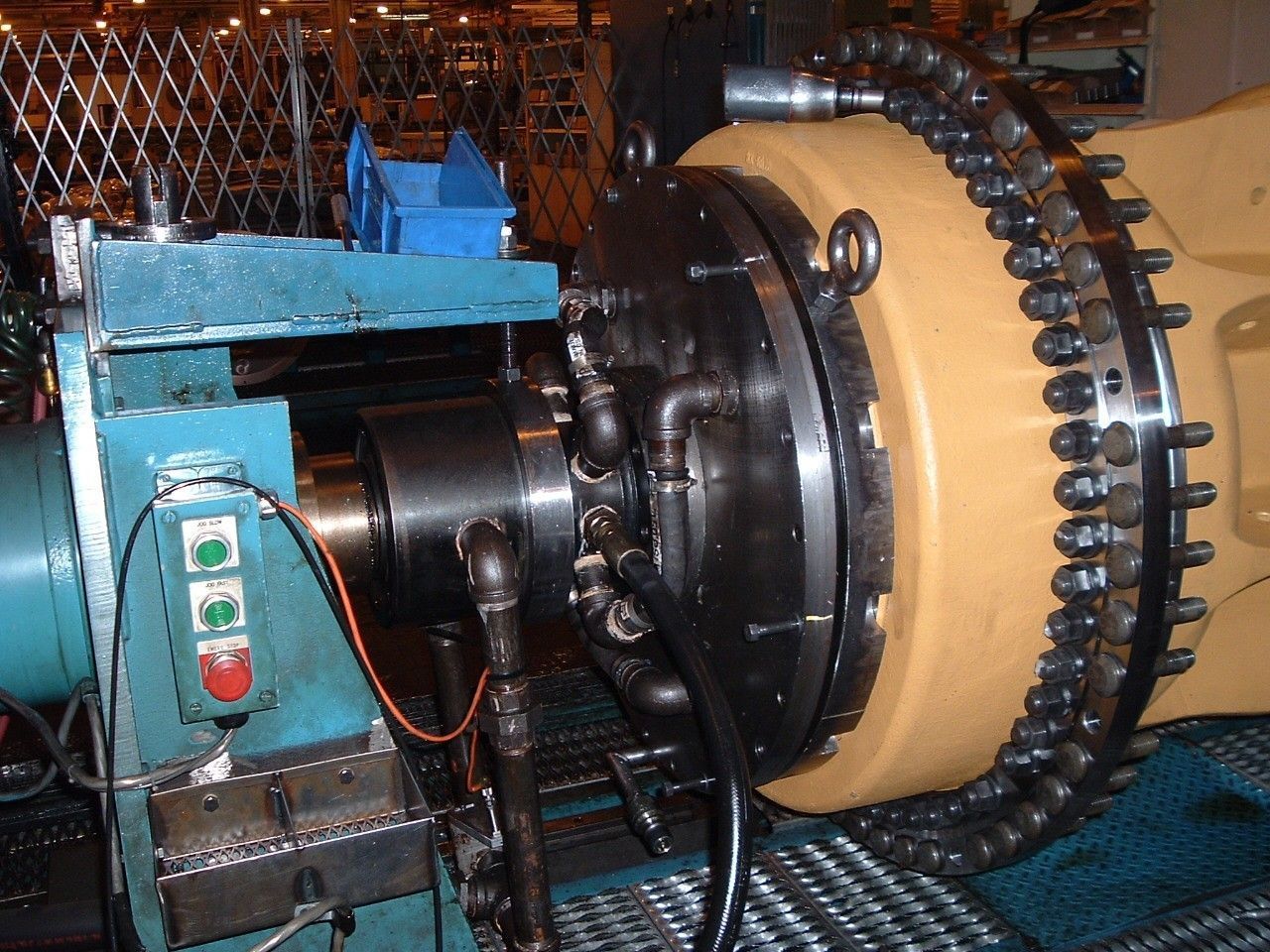
This is the rotary union and flange plate on the drive end of the wheel. The rotary union allowed oil to exit out of the gear drive end for better cleaning and flushing of the bearings and inner surface areas of the wheel.
- Vickers Proportional Braking Valve - Kevin redesigned the service brake circuit to include a proportional pressure valve to simulate the actual braking pressure of a human foot while driving the truck. The previous circuit only allowed full pressure which locked the wheel up. The proportional valve allowed a lower braking pressure to permit the wheel to spin and 'defuzz' the braking pads and surfaces. This required extensive debug of both the hydraulic circuit and the machine logic due to the extensive surface area of the braking pads and plates. Kevin said "pretend you are driving the truck down a Gibson County haul road and write that into the code". So, that's what I visualized when writing the code.
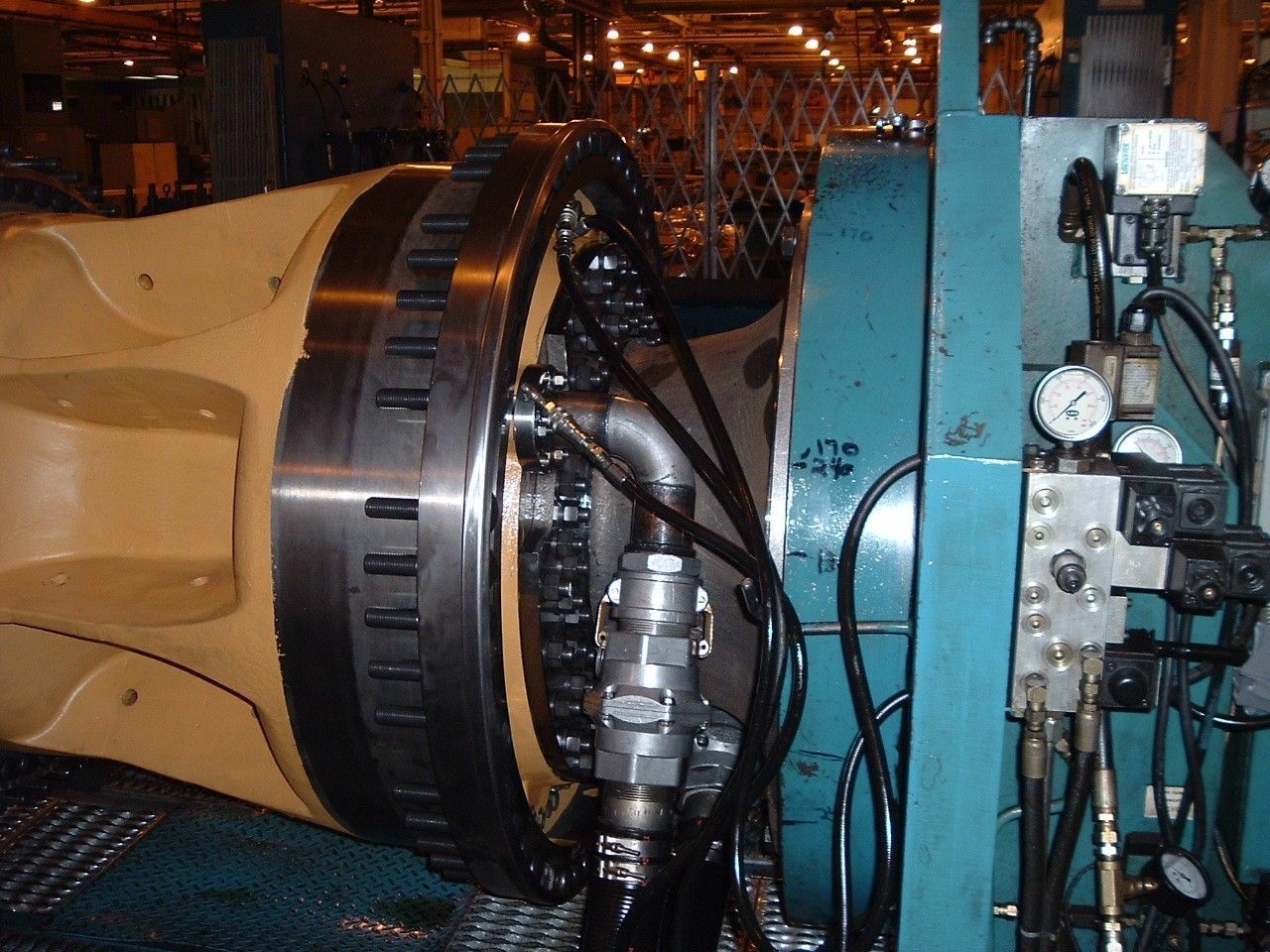
This is the Vickers Proportional Braking valve which required extensive debug, but resulted in major improvements to the braking operation of the machine, and a realistic braking cycle on the wheel.
All of these improvements to the MD4855 Gen I wheel flusher contributed to a higher quality wheel in the field with less contamination resulting in a longer life for Caterpillar Mining Truck wheels. Many of these modifications were fabricated and installed on the plant floor in Decatur, and most required extensive debug. Minimizing production downtime was crucial at all times, therefore pressure was intense. Some improvements were made over weekend shutdowns and required extensive hours just to get the machine back up by Monday morning. But, Kevin always came through and knew that the culmination of his work would save Caterpillar millions of dollars and that his work would be appreciated. And, I had the incredible pleasure to tag along for part of that ride.
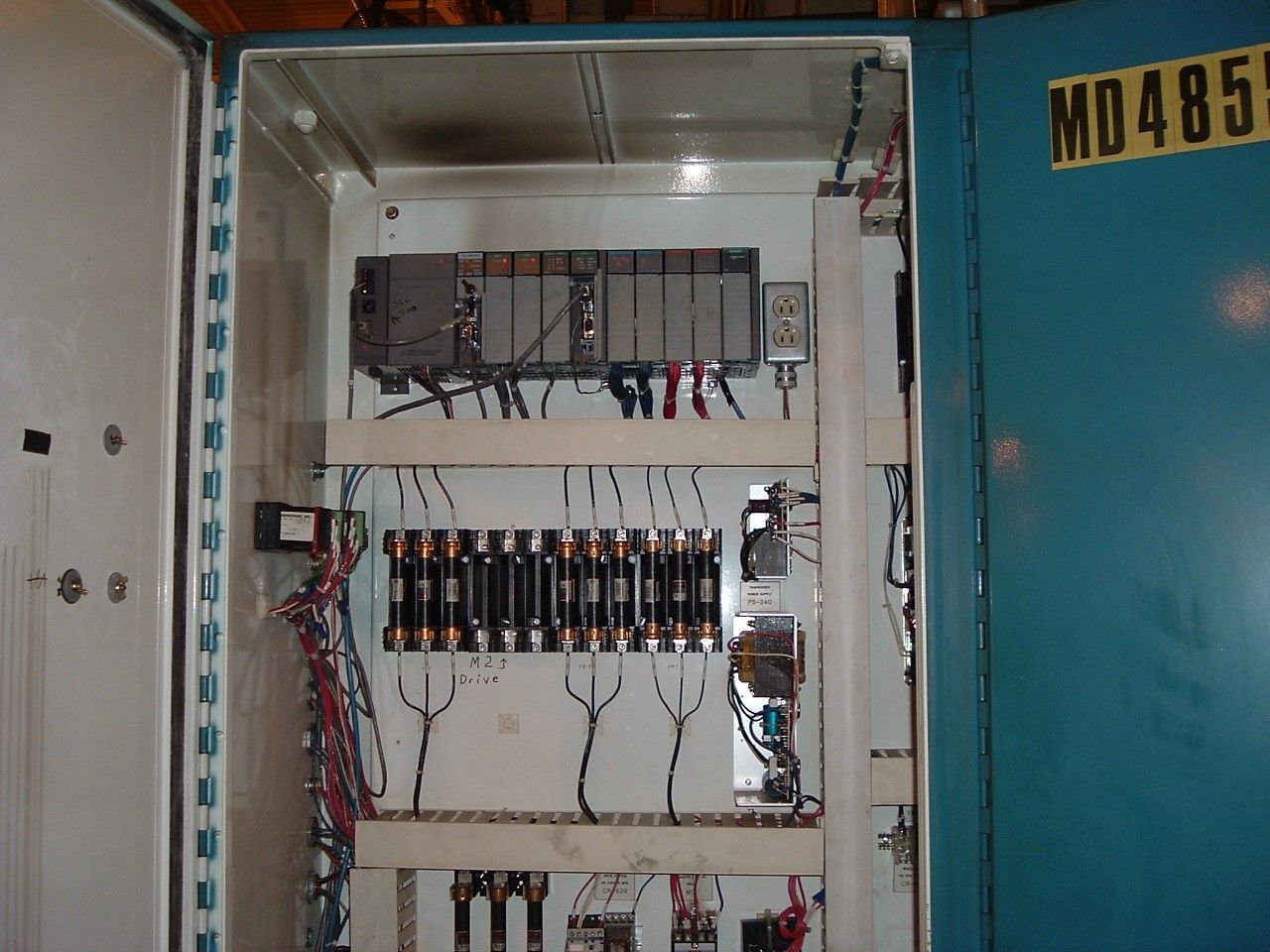
The brains of the machine: an Allen-Bradley SLC 505 PLC with numerous analog and digital I/O. An AB Basic card communicated with the particle counter.
And, this project eventually allowed me to start a business and become an entrepreneur and start a renewable energy business where one did not exist before. And, I owe at least some of the out-of-the-box thinking to Kevin, and I'm grateful for the opportunity to work with him.
You might also like
Book a Service Today
We will get back to you as soon as possible
Please try again later
Let’s Elevate Your Operations
Contact Us Today for Tailored Solutions and Expert Support

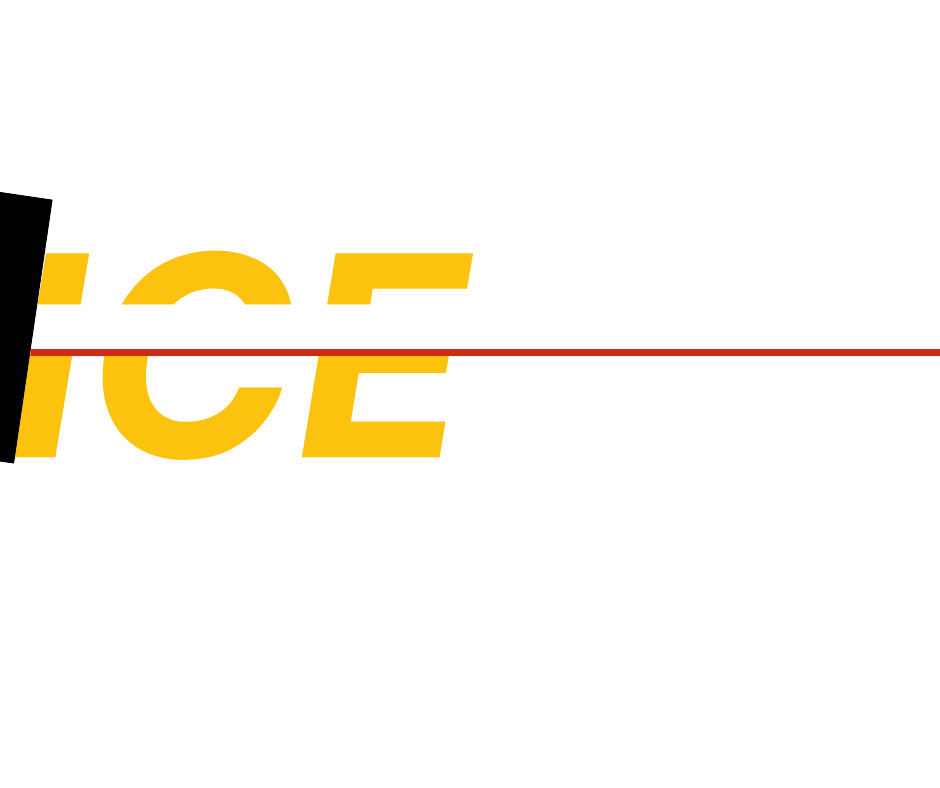
Industrial Control Engineering, LLC (ICE) is dedicated to delivering innovative control solutions and exceptional service across a variety of critical industries. With expertise in energy efficiency, automation, and water treatment systems, we empower our clients to achieve optimal performance and long-term success.



